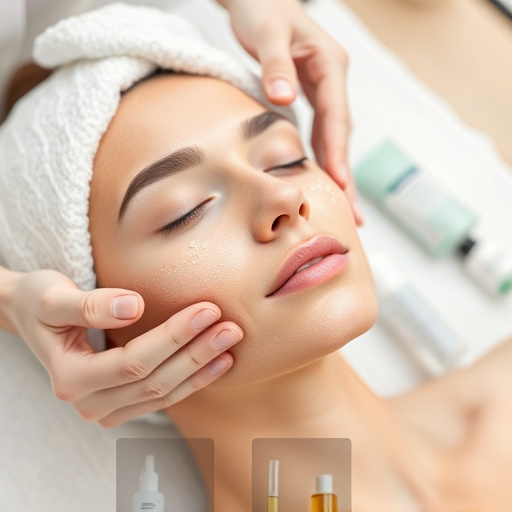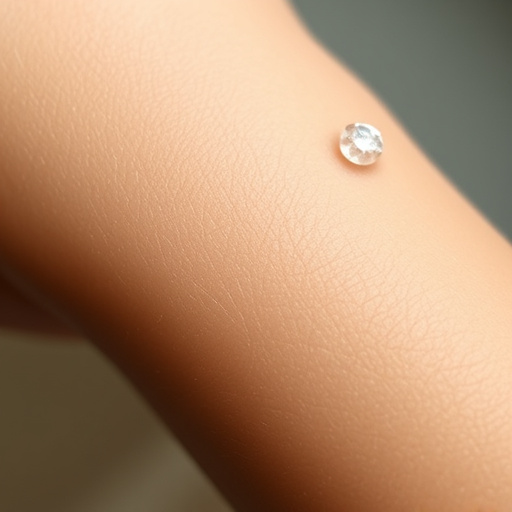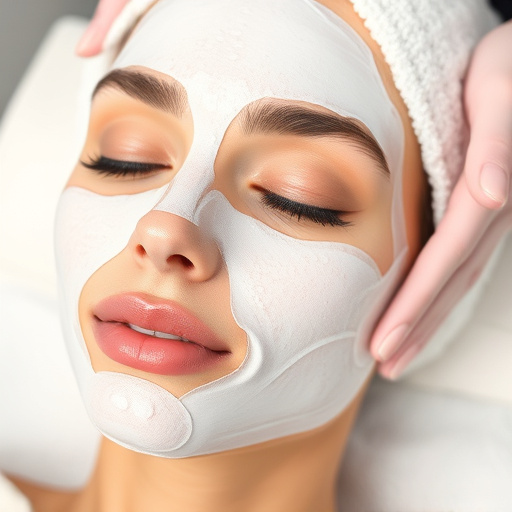Laser Hair Removal Sessions: High Client Satisfaction Through Technology, Safety, and Effectiveness
Laser hair removal sessions have revolutionized the beauty industry by providing a permanent solutio…….
In the realm of aesthetics and personal care, laser hair removal sessions have emerged as a game-changer, offering a permanent solution to unwanted body hair. This non-invasive procedure has revolutionized the way individuals manage their appearance, providing a more efficient and effective alternative to traditional methods like shaving or waxing. In this article, we embark on an in-depth exploration of laser hair removal sessions, delving into its mechanics, global impact, economic implications, technological innovations, regulatory landscape, challenges, and future prospects. By the end, readers will have a comprehensive understanding of this popular aesthetic procedure and its role in the beauty industry.
Laser hair removal is a medical aesthetic procedure that utilizes concentrated beams of light to target and destroy hair follicles, thus inhibiting hair growth. During a session, a technician directs a handheld laser device onto specific areas of the body, such as legs, arms, underarms, or face. The laser energy is absorbed by melanin in the hair shaft, converting it into heat, which damages or destroys the follicle. This process stimulates the body’s natural immune response to heal the affected area, resulting in reduced and finer hair regrowth over time.
Key components of a laser hair removal session include:
Laser Technology: Various types of lasers are employed, each with specific properties to target different skin types and hair colors effectively. Common laser types include alexandrite, diode, and Nd:YAG (neodymum-doped yttrium aluminum garnet).
Skin Preparation: Before the session, the treatment area is cleansed and prepared. Patients may be advised to avoid sun exposure and certain skin care products to ensure optimal results.
Treatment Area Targeting: A trained technician identifies and marks the target areas, ensuring precise treatment.
Laser Application: The laser device is gently applied to the skin, delivering pulses of light at specific intervals. The intensity and duration of each pulse may vary depending on the laser type and patient’s needs.
Post-Treatment Care: After the session, patients are usually advised to apply a calming or moisturizing lotion. Common side effects like redness and swelling subside within a few hours to a couple of days.
Historically, laser hair removal has evolved from its early beginnings in the 1960s, when the first solid-state lasers were introduced for medical purposes. Over time, advancements in technology have led to safer, more efficient, and targeted laser systems, making it a popular choice for both medical and aesthetic applications.
Laser hair removal sessions have garnered significant global attention, with increasing demand across diverse regions, driven by evolving societal norms and beauty standards. Here’s an overview of its international influence:
| Region | Market Size (in billion USD) | Growth Rate (%) | Key Trends |
|---|---|---|---|
| North America | 3.2 | 7.5 | High adoption rates, advanced technology, and increasing consumer awareness. |
| Europe | 1.8 | 6.2 | Growing preference for permanent hair reduction, focus on natural beauty, and diverse laser technologies. |
| Asia-Pacific | 1.5 | 8.9 | Rapid market expansion, growing middle class, and cultural shifts towards personal grooming. |
| Latin America | 0.7 | 4.3 | Increasing demand for affordable solutions, rising disposable income, and beauty influencers’ impact. |
| Middle East & Africa | 0.5 | 5.2 | Growing awareness of modern aesthetics, high per capita spending on beauty, and celebrity endorsements. |
These regional trends highlight the universal appeal of laser hair removal sessions, with each market exhibiting unique dynamics influenced by cultural, economic, and social factors. As a result, the global laser hair removal market is projected to reach USD 9.2 billion by 2027, growing at a CAGR (Compound Annual Growth Rate) of 8.4% from 2020 to 2027.
The economic aspects of laser hair removal sessions play a pivotal role in shaping its industry and overall impact. Several factors contribute to its market dynamics:
Market Size and Growth: As indicated by the global trends, the market for laser hair removal is experiencing substantial growth, driven by increasing consumer demand and advancements in technology.
Investment Patterns: The beauty industry, encompassing laser hair removal, has attracted significant investments from both established companies and startups. This influx of capital fuels innovation, marketing efforts, and expansion strategies.
Revenue Streams: Revenue generation within the laser hair removal market stems from various sources, including in-clinic treatments, home use devices, and post-treatment care products. The average price per session varies widely depending on the region, technology used, and treatment area, ranging from $50 to $400 or more.
Economic Impact: The laser hair removal industry contributes to economic growth through job creation in clinics, research and development, manufacturing of equipment and supplies, and related services. It also stimulates local economies as consumers seek aesthetic treatments.
Technological innovations have been pivotal in enhancing the effectiveness and accessibility of laser hair removal sessions. Here are some notable advancements:
Pulsed-Dye Laser (PDL): PDLs target melanin in the hair follicle and skin, making them suitable for treating lighter hair on darker skin tones. This technology has improved safety and efficacy, addressing a significant gap in previous laser systems.
Intense Pulsed Light (IPL): IPL devices emit a broad spectrum of light, allowing for treatment of various skin types and hair colors. They are versatile and can be used for both permanent hair reduction and aesthetic purposes.
Long-Pulse Nd:YAG Laser: This technology offers deeper penetration into the skin, making it ideal for treating thicker, coarser hairs. Long-pulse lasers are known for their safety and minimal side effects, making them a popular choice for sensitive areas like the face.
Home Use Devices: The development of at-home laser hair removal devices has democratized access to this technology. These portable, handheld gadgets provide convenience and affordability, allowing individuals to maintain smooth skin between professional sessions.
The regulatory landscape surrounding laser hair removal sessions is crucial for ensuring safety, quality, and consumer protection. Key policies and regulations include:
Medical Device Regulations: Laser devices are classified as medical devices, subject to strict regulations in various countries. These regulations dictate manufacturing standards, clinical trials, labeling, and marketing practices to ensure device safety and efficacy.
Professional Licensing: In many regions, technicians performing laser hair removal must obtain specialized training and certifications. Licensing ensures that practitioners have the necessary knowledge and skills to deliver safe and effective treatments.
Informed Consent: Patients are required to provide informed consent before undergoing any laser treatment. This process involves disclosing potential risks, side effects, and alternatives to ensure patients make well-informed decisions.
Data Privacy and Security: With increasing digitalization, regulations like GDPR (General Data Protection Regulation) in Europe and HIPAA (Health Insurance Portability and Accountability Act) in the US protect patient data collected during laser treatments.
Despite its numerous advantages, laser hair removal sessions face several challenges and criticisms that impact its adoption and effectiveness:
High Cost: The upfront cost of treatments and equipment can be a significant barrier, especially for individuals with limited financial resources. This factor discourages some potential clients and may lead to suboptimal treatment plans.
Skin Irritation and Sensitivity: While modern lasers have improved safety profiles, some patients still experience skin irritation, redness, or changes in skin texture after treatments. Individuals with sensitive skin may be more prone to these issues.
Individual Variability: The effectiveness of laser hair removal varies from person to person, depending on factors like skin and hair type, treatment area, and individual responses to the laser energy. Some areas may require multiple sessions for optimal results.
Lack of Accessibility in Certain Regions: In some parts of the world, particularly underdeveloped or remote regions, access to professional laser hair removal services is limited due to infrastructure gaps and economic constraints.
To address these challenges, strategies include:
An upscale spa in a bustling North American metropolis offers comprehensive laser hair removal services, catering to diverse clientele. They employ advanced alexandrite lasers for efficient and precise treatments. The clinic’s success lies in its personalized approach, considering skin and hair types, and providing post-treatment care products. Their marketing strategy focuses on creating a luxurious experience, attracting clients who value both aesthetics and comfort.
A non-profit community clinic in a vibrant Latin American city provides affordable laser hair removal as part of its comprehensive beauty services. They utilize diode lasers adapted for at-home use, enabling them to reach a broader population. The clinic’s success is attributed to its commitment to accessibility and affordability, addressing the needs of economically disadvantaged communities.
In an Asian metropolis known for its cosmopolitan vibe, a medical aesthetic center offers cutting-edge laser hair removal treatments using Nd:YAG lasers. They target both local residents and expatriates, promoting their services through online platforms and social media. The center’s success stems from combining advanced technology with a customer-centric approach, ensuring positive experiences and encouraging word-of-mouth referrals.
The future of laser hair removal sessions holds immense potential for growth and innovation, shaped by emerging trends and technological advancements:
Personalized Treatments: With the rise of AI (artificial intelligence) and machine learning, personalized treatment plans tailored to individual needs will become more prevalent. These technologies can analyze skin and hair data to optimize laser settings and outcomes.
Hybrid Approaches: Combining laser hair removal with other aesthetic procedures, such as microdermabrasion or radiofrequency treatments, offers comprehensive solutions for skin rejuvenation. Hybrid approaches may gain popularity as consumers seek holistic beauty regimens.
At-Home Devices and Telemedicine: The trend towards at-home laser devices will continue to grow, providing convenience and accessibility. Telemedicine consultations enable remote assessments and treatment planning, expanding reach and efficiency.
Focus on Safety and Comfort: Future developments will likely prioritize further improving safety profiles while enhancing patient comfort during treatments. This may include novel cooling mechanisms and targeted delivery systems.
Laser hair removal sessions have emerged as a transformative force in the realm of aesthetics, offering permanent solutions to a universal problem. Its global impact, economic potential, and technological advancements position it as a dynamic sector within the beauty industry. While challenges exist, ongoing innovations and strategic adaptations will continue to shape its future trajectory.
As we look ahead, laser hair removal is poised to become more personalized, accessible, and integrated into holistic wellness routines. With continued research, refined technologies, and thoughtful policy frameworks, this procedure will undoubtedly leave a lasting impact on the way individuals embrace and maintain their personal aesthetics.
Q: Is laser hair removal safe for all skin types?
A: While modern lasers have improved safety profiles, specific laser technologies may not be suitable for all skin types, especially those with darker or tanned skin. Skilled technicians conduct thorough consultations and assessments to determine the most appropriate laser type.
Q: How many sessions are typically required?
A: The number of sessions varies depending on factors like skin and hair type, treatment area, and individual response. On average, 4-8 sessions spaced several weeks apart are needed for optimal results, but some areas may require more or fewer treatments.
Q: Are there any long-term side effects?
A: When performed by qualified professionals, laser hair removal has minimal long-term side effects. Potential temporary issues include redness, swelling, and minor skin irritation, which usually subside within a few days.
Q: Can I perform laser hair removal at home?
A: At-home devices are available, offering convenient and affordable options for maintaining smooth skin between professional sessions. However, they may not provide the same level of precision and safety as in-clinic treatments. Always follow manufacturer guidelines and consult professionals for advice.
Q: How does laser hair removal differ from shaving or waxing?
A: Unlike shaving or waxing, which remove hair at the skin’s surface, lasers target the follicle itself, inhibiting future hair growth. This results in longer-lasting smoothness and reduced hair visibility over time.

Laser hair removal sessions have revolutionized the beauty industry by providing a permanent solutio…….

Laser hair removal sessions have become a popular, permanent solution for unwanted hair, offering qu…….

Laser hair removal has evolved into a minimally invasive, effective method for permanent hair reduct…….

Laser hair removal sessions offer a non-invasive, permanent solution for managing unwanted body hair…….

Laser hair removal sessions offer a permanent solution for unwanted hair using concentrated light en…….

Laser hair removal uses light energy to target and destroy hair follicles, preventing unwanted hair…….

A qualified professional conducts a comprehensive consultation for successful laser hair removal, co…….